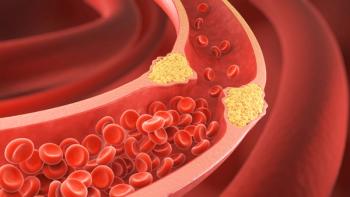
Review Highlights Treatment Landscape, Insights on Pregnancy Management for ET or PV
Polycythemia vera and essential thrombocythemia are both slow-progressing conditions and treated mainly with symptom management, but novel agents and gene targets have changed the landscape in recent years.
Both polycythemia vera (PV) and essential thrombocythemia (ET) are typically treated with hydroxyurea to prevent thrombotic complications, but hydroxyurea is contraindicated during pregnancy, highlighting the need for more therapy options. A
PV and ET, the most common types of Philadelphia chromosome-negative myeloproliferative neoplasms (MPNs), cause erythrocytosis and thrombocytosis, respectively. Both PV and ET progress slowly, and preventing thrombotic complications is typically the main goal with treatment. MPNs have the potential to transform into leukemia, but the leukemic transformation rate in PV and ET is less than 3% at 10 years.
In recent years, research has found that the majority of patients with MPNs have JAK2 mutations. In PV, more than 95% of patients show JAK2 mutations, as do almost half of patients with ET. Often, patients without JAK2 mutations have calreticulin (CALR) or MPL gene mutations, while about 20% of patients are considered triple negative and harbor none of these mutations. Given the prevalence of JAK mutations in PV and ET, JAK inhibitors have been developed to target this pathway. Even so, hydroxyurea is the standard first-line therapy for both PV and ET.
Patients with PV typically have worse overall survival compared with the general population and with patients with ET. The JAK inhibitor ruxolitinib is a go-to second-line agent in patients who are intolerant or refractory to hydroxyurea. Patients with ET have a greater risk of thrombosis than the general population, and the recommended first-line treatment for high-risk patients is either hydroxyurea or interferon (IFN) or anagrelide in hydroxyurea-intolerant or refractory patients.
Aside from hydroxyurea, IFN is a particularly promising treatment for both PV and ET. It has been a known effective option for decades, but current IFN agents are more tolerable than past versions. With impressive overall response rates, the authors highlight IFN-based treatments as a potential alternative to hydroxyurea for women of reproductive age.
Busulfan is another effective treatment option for managing both conditions, but it has been shown to increase the risk of leukemic transformation in the long term. Even so, it can be effective in the second line for elderly patients.
Several other agents are being evaluated for PV and ET treatment. The histone-deacetylase (HDAC) class I inhibitor givinostat has shown promise in early research alone or in combination with hydroxyurea, with a phase 3 study currently planned. Bomedemstat, a lysine-specific demethylase 1 (LSD1) inhibitor, prolonged survival in murine studies and is being tested in patients with PV or ET refractory to prior therapy in a phase 2 study.
Idasanutlin, an oral MDM2 antagonist, is being evaluated in a phase 2 trial of patients with PV after showing good tolerability and high efficacy in previous research. Rusfertide, which can mitigate iron deficiency in patients with PV, is another potential agent currently being tested against a placebo in a phase 3 study of patients undergoing additional therapy for PV.
Both hydroxyurea and anagrelide are contraindicated with pregnancy. Considering pregnant patients are at an approximately 6 times greater risk of thrombosis than healthy nonpregnant women, treatment of this subgroup must be approached differently. Pregnancy is more common in ET because more patients of reproductive age have ET.
Using IFN has improved live birth rates in recent cases, but rates are still lower than in the general population. Pregnancy complications in patients with MPNs affect both maternal mortality and fetal status, with common complications including arterial or venous thrombosis, hemorrhage, placental insufficiency, preeclampsia, and premature birth.
Fetal complications include fetal growth restriction, intrauterine growth restriction, intrauterine fetal death, and stillbirth. These complications are thought to result from placental microthrombosis, so preventing microcirculatory problems is a key aspect of managing pregnancy in tandem with MPNs.
In addition to IFN, which is the only cytoreductive therapy approved during pregnancy, aspirin has been shown to potentially improve live birth rates in MPN patients, although it must be stopped prior to delivery and replaced with low-molecular-weight heparin. In the authors’ experience, high-risk pregnant women with ET were treated with IFN and low-dose aspirin and all babies were born healthy.
To conclude, there have been significant advances in ET and PV treatment, including the identification of JAK2, CALR, and MPL as driver genes. These advances have also changed the way pregnancy is managed in patients with MPNs. With new agents in development, survival and patient quality of life will hopefully further improve in the coming years.
Reference
Edahiro Y. Treatment options and pregnancy management for patients with PV and ET. Int J Hematol. 2022;115(5):659-671. doi:10.1007/s12185-022-03336-6
Newsletter
Stay ahead of policy, cost, and value—subscribe to AJMC for expert insights at the intersection of clinical care and health economics.









































